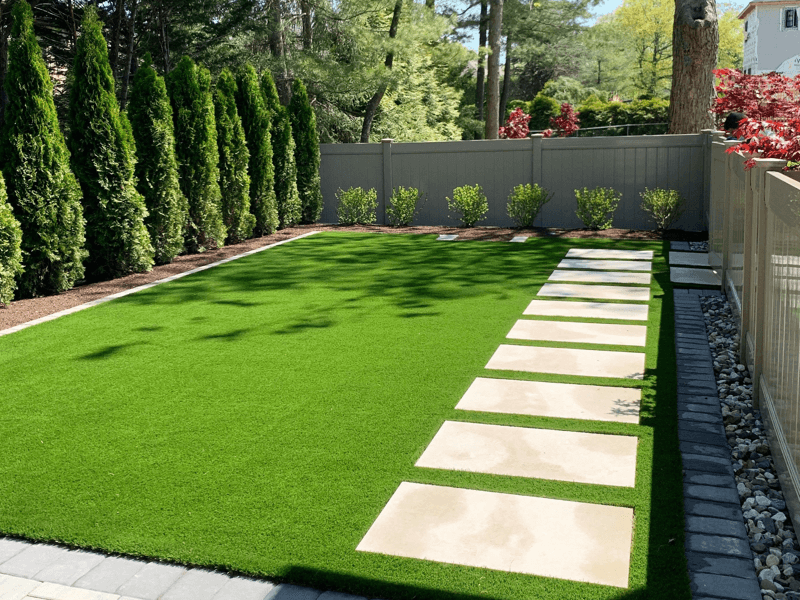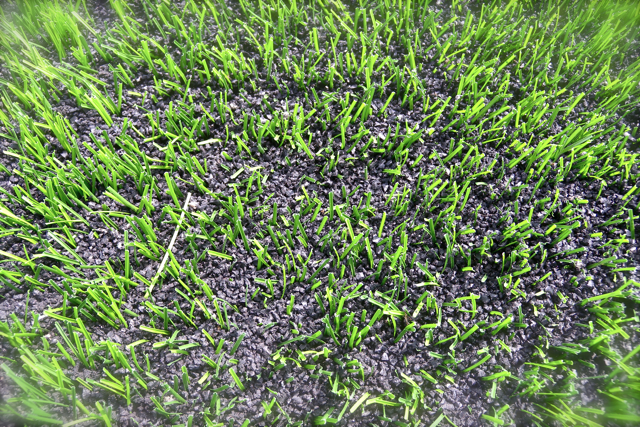Premium Arizona Turf Options for a Beautiful and Green Landscape
Premium Arizona Turf Options for a Beautiful and Green Landscape
Blog Article
Look Into the Environmental Conveniences of Opting for Artificial Turf Solutions
The adoption of synthetic grass remedies provides an engaging chance to address pressing environmental obstacles. By dramatically reducing water usage and reducing the application of dangerous chemicals, these options not only promote sustainable landscaping yet likewise shield local ecological communities.
Water Conservation Perks
Among one of the most substantial benefits of synthetic grass is its capability to preserve water. Typical yard yards call for significant irrigation, especially in areas vulnerable to drought or water constraints. In contrast, artificial lawn does not require watering, dramatically minimizing the general need for water resources. This feature is specifically useful in deserts where water shortage is a pressing issue.
By removing the requirement for regular watering, artificial lawn adds to lasting landscape techniques and aids minimize the environmental influence of extreme water consumption. Additionally, the conservation of water reaches the reduction of runoff, which can result in soil erosion and river contamination.
In addition, the installment of man-made turf enables homeowners and districts to assign water resources extra efficiently, focusing on essential usages such as drinking water and agriculture. The shift towards synthetic grass not just advertises accountable water usage however likewise straightens with more comprehensive environmental goals aimed at protecting all-natural sources.
As areas significantly prioritize sustainability, the water preservation advantages of synthetic grass offer an engaging case for its adoption in domestic and business landscaping jobs.
Reduced Chemical Usage
The shift to artificial grass dramatically decreases the reliance on chemical therapies generally used in natural yard upkeep. Typical lawn monitoring usually includes the application of pesticides, herbicides, and fertilizers to promote growth and control pests. These chemicals can posture threats to human health, local wildlife, and the atmosphere, adding to dirt and water contamination.
In comparison, synthetic turf eliminates the demand for these hazardous substances. By reducing the launch of artificial compounds right into the ecosystem, man-made grass advertises healthier soil and water systems.
In addition, the lack of chemical runoff related to artificial grass installations assists safeguard local waterways from pollution, supporting water life and maintaining biodiversity. Arizona turf. As areas progressively focus on sustainable techniques, choosing synthetic grass provides a sensible remedy that aligns with ecological preservation goals. With this shift, homeowner can delight in lush environment-friendly rooms without jeopardizing ecological wellness, leading the way for a more lasting future
Reduced Carbon Footprint

In addition, the installment of artificial click now grass can cause significant water conservation. Natural lawns require significant amounts of water for irrigation, which not only contributes to the carbon impact connected with water removal and therapy but also stress regional water sources. On the other hand, synthetic grass needs very little maintenance, needing no watering, consequently significantly minimizing water use and its associated energy expenses.
In addition, the long life of artificial grass contributes to its decreased carbon impact. With a lifespan of approximately 15 years or even more, the need for regular replacements is decreased, causing less waste and reduced energy consumption in manufacturing and dealing with typical turf choices. In general, artificial grass offers a sustainable choice for environmentally mindful landscape design.
Habitat Conservation
Habitat preservation is an important consideration in the discussion over landscaping choices, specifically when contrasting synthetic grass to natural yard. Natural grass yards usually need comprehensive upkeep, consisting of using herbicides, pesticides, and plant foods, which can adversely influence neighborhood communities. These chemicals can leach into the dirt and rivers, hurting native vegetation and fauna and disrupting neighborhood habitats.
Artificial lawn removes the demand for unsafe chemicals, thereby safeguarding close-by wildlife and preserving the integrity of surrounding environments. The installment of artificial turf can lead to the conversion of former lawn locations right into even more biodiverse landscapes, such as pollinator additional hints yards or native plant locations, reference which can support local wildlife.
Inevitably, the shift to synthetic grass not just preserves water and decreases upkeep initiatives yet also fosters an extra unified relationship between human activities and the natural surroundings, advertising habitat conservation at the same time.
Long-Term Sustainability
Long-term sustainability is an essential factor in evaluating the advantages of artificial grass over typical lawn lawns. One of the most considerable advantages of synthetic lawn is its resilience; it can last as much as 15-20 years with very little upkeep, whereas all-natural yard needs frequent reseeding and replacement. This durability minimizes the requirement for continuous sources, such as water, fertilizers, and pesticides, which are crucial for preserving a healthy and balanced turf lawn.
In addition, synthetic grass adds to a reduction in carbon exhausts connected with grass care tools. Standard lawns typically require gas-powered lawn mowers, leaners, and blowers, all of which contribute to air pollution. Turf installation phoenix az. In contrast, synthetic grass gets rid of the need for such equipment, advertising a cleaner setting
Furthermore, the manufacturing of artificial turf increasingly utilizes recycled materials, enhancing its sustainability account. As makers adopt environment-friendly practices, the ecological footprint of synthetic grass remains to diminish.

Verdict
The fostering of fabricated lawn services offers considerable ecological benefits, consisting of considerable water preservation, decreased dependence on damaging chemicals, and a reduced carbon footprint. Artificial grass help in preserving all-natural environments by reducing land disruption and promoting long-lasting sustainability via the use of long lasting materials. Collectively, these variables highlight the possibility of synthetic grass to add favorably to environmental wellness and offer a feasible alternative to traditional landscape design practices in an increasingly resource-conscious globe.
In contrast, synthetic grass does not require watering, dramatically decreasing the total demand for water sources. By minimizing the release of artificial compounds into the environment, artificial turf advertises healthier dirt and water systems.
Additionally, the installment of synthetic lawn can result in substantial water preservation. In comparison, synthetic turf requires minimal upkeep, calling for no watering, thereby significantly minimizing water usage and its connected energy expenses.

Report this page